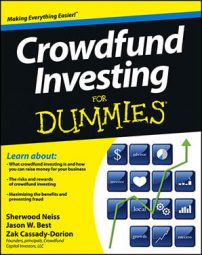No matter what crowdfunding source you use for your business, you have to be careful with your spending and try to make it last. But when you add equity or debt investors into the mix — people who expect to see a return on their money and expect you to use their money very prudently — the financial pressure increases.
Investors have expectations. They expect you to be a careful custodian of their money and to deploy it in the best ways to achieve your business goals. For this reason, you don’t want to schedule a Caribbean vacation two weeks after your funding campaign closes and then post lots of photos from extravagant locations on Facebook.
Even if you had saved for that trip for ten years and every expense was paid for strictly from your personal finances, the perception wouldn’t be good. You’d have to spend precious time explaining to some investors where the money came from and why you thought the timing would be appropriate.
What can you do to demonstrate to your investors that you’re carefully deploying their capital? With every task you undertake, ask yourself questions like these:
What is the return on investment (ROI) for this? How soon will you get the money you spent back in the form of new sales?
How can you do this cheaper?
How can you negotiate a better discount?
Do you really need to spend this money now, or can you delay the expense?
Could you do what you're thinking about by exchanging in-kind services?
How can you test this with a small experiment before you spend big?
This last point requires some additional explanation. Whenever you can test a strategy in a small way before you launch a major initiative, you should do so. That way, you learn from the experiment so that when you launch your major initiative, you’ll be right on target and achieve the intended outcome. The mantra here is “Fail cheap and fast, and then track in on success.”
When cannons were used in wars, the cannon officers would start by testing the aim of the cannon with very small munitions — just large enough to see where they were tracking. Then, when they had learned just how to aim the cannon to reach their intended targets, they would use their heavy munitions to destroy the enemy.
You aren’t aiming to destroy anyone, but try to think in a similar way. Use this tactic when you’re considering a new sales and marketing strategy, a new product line, or other innovations. If you try small experiments and they fail, they fail quickly and cheaply, which is much better than launching a major initiative (that consumes significant resources) only to discover something at the launch of your business that dooms you to failure.

